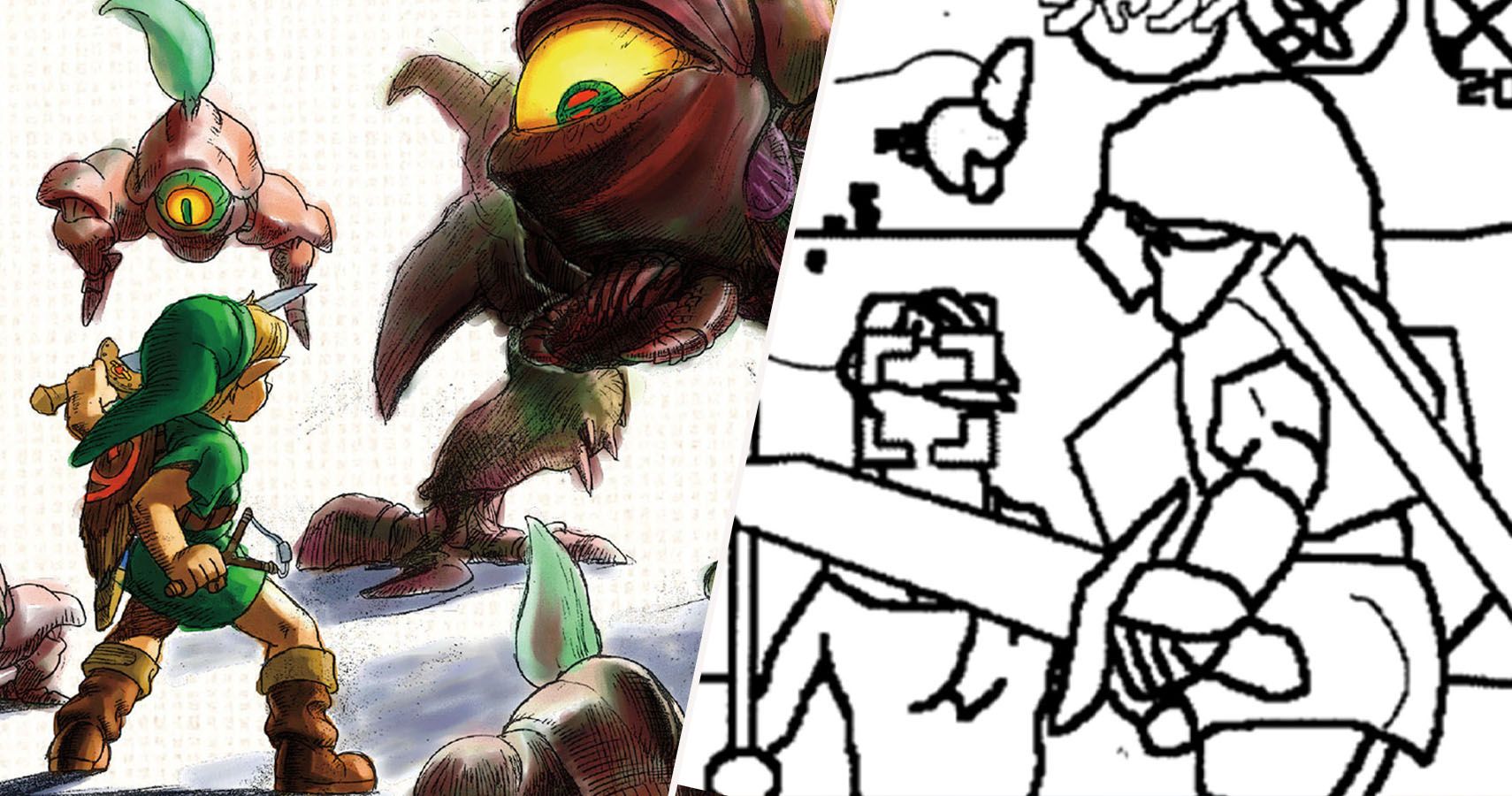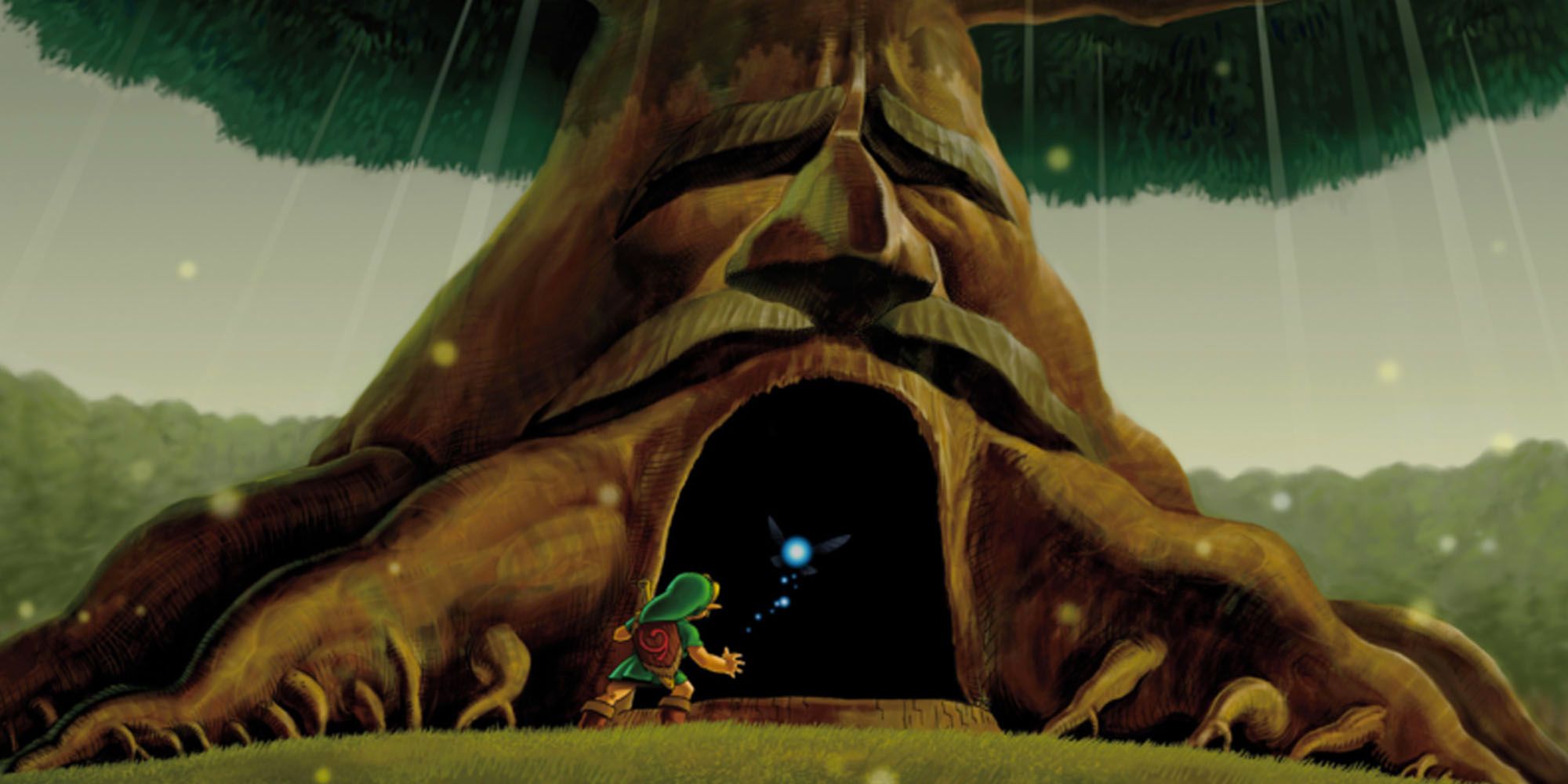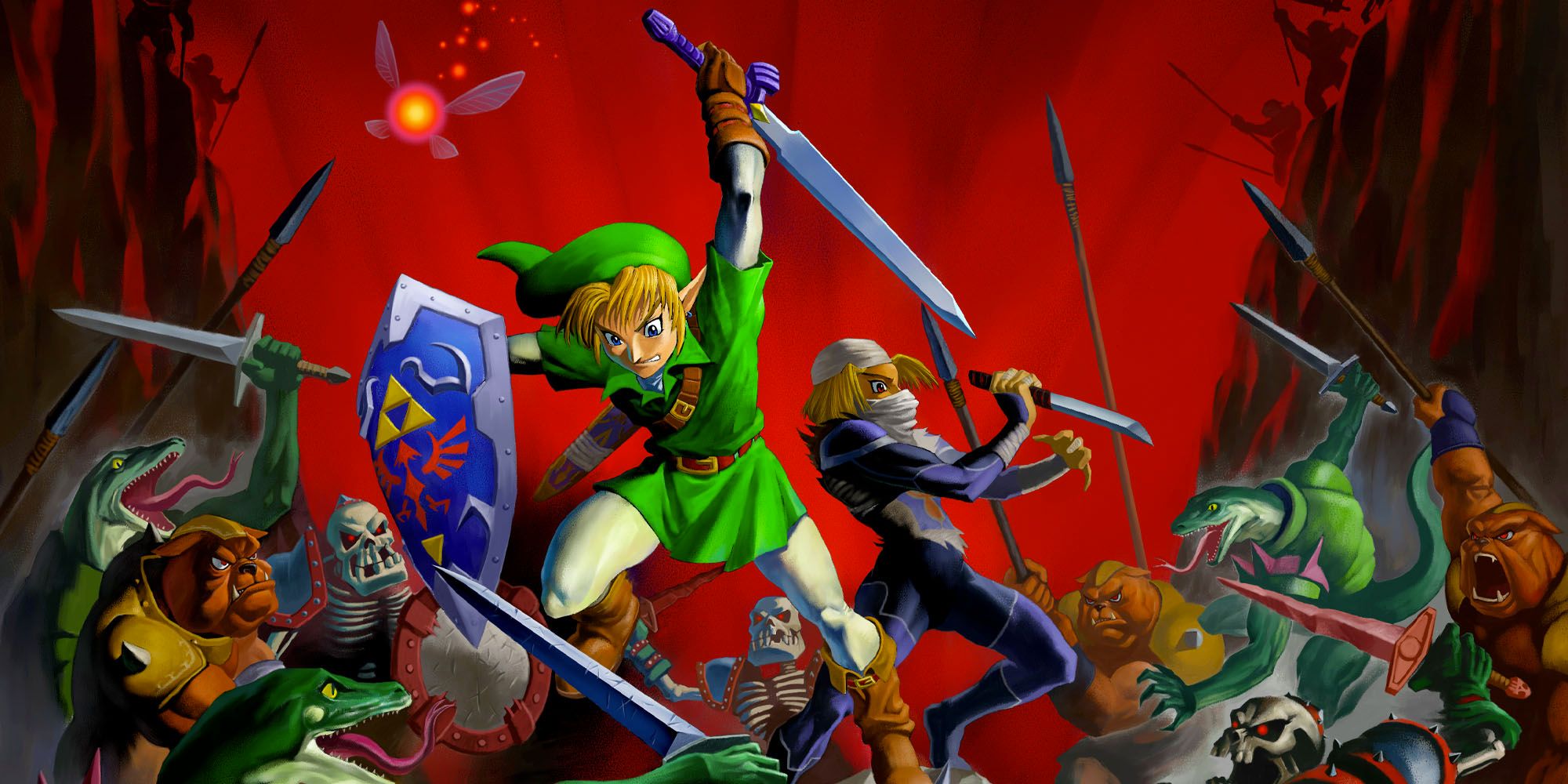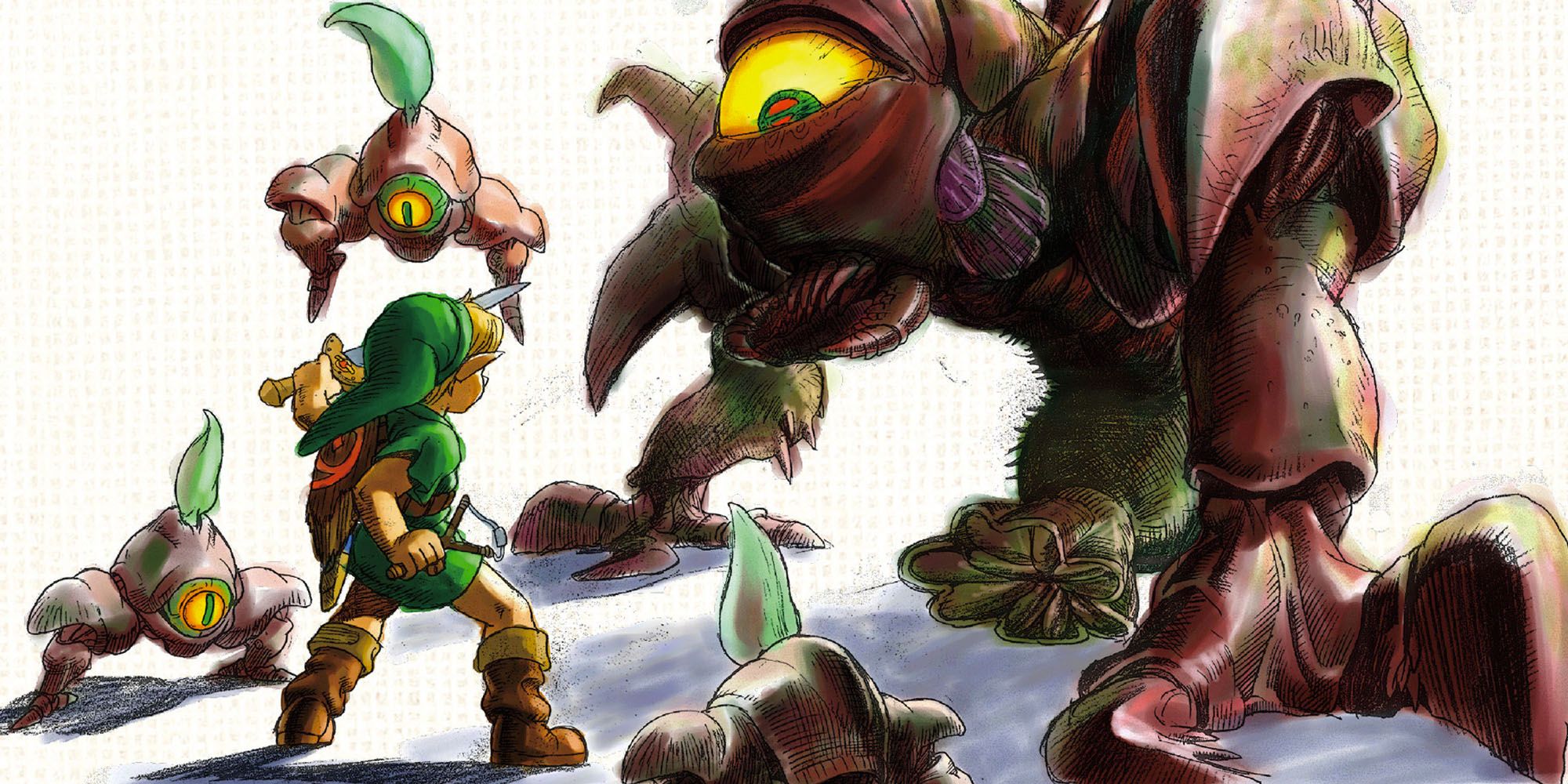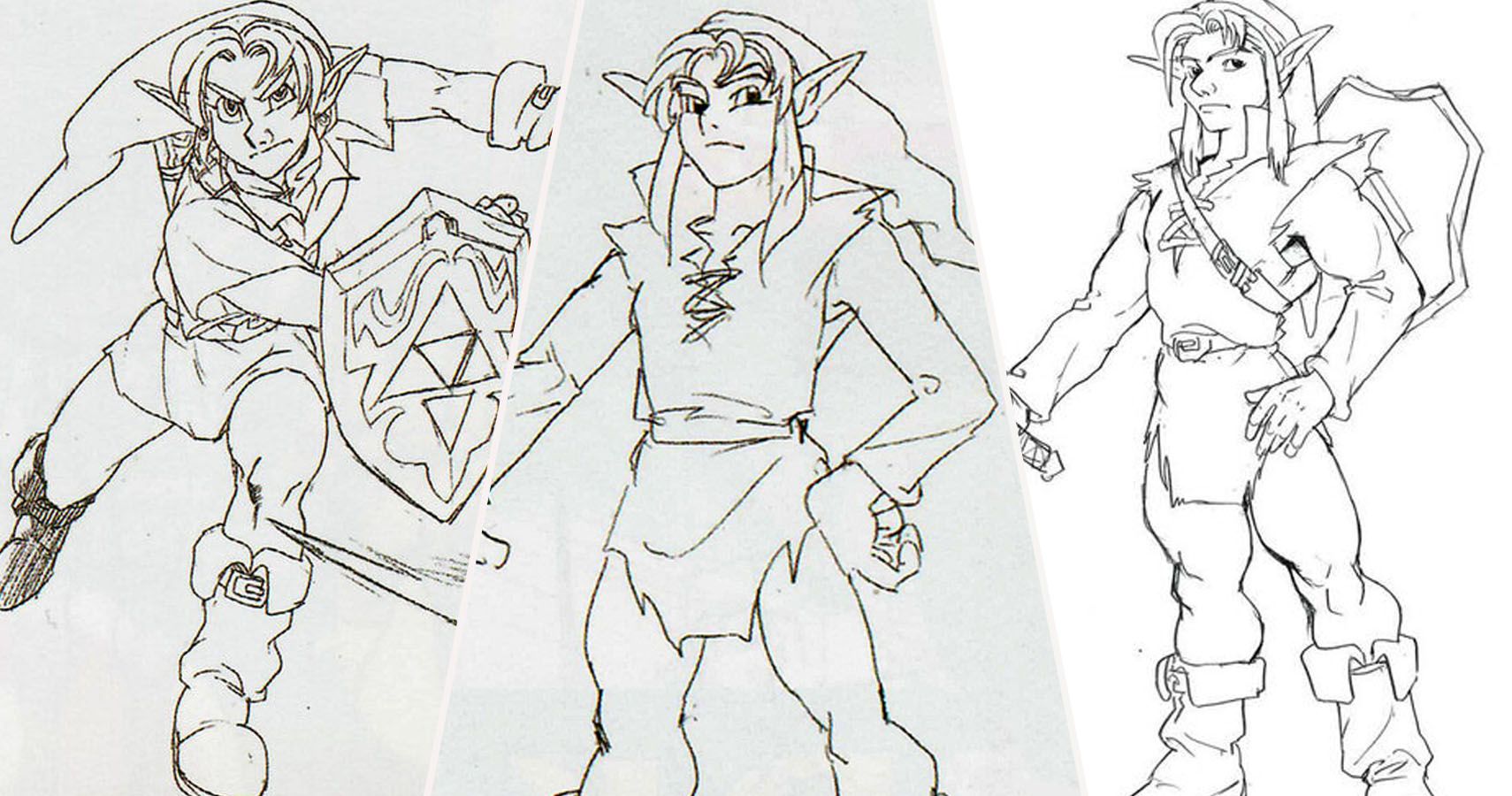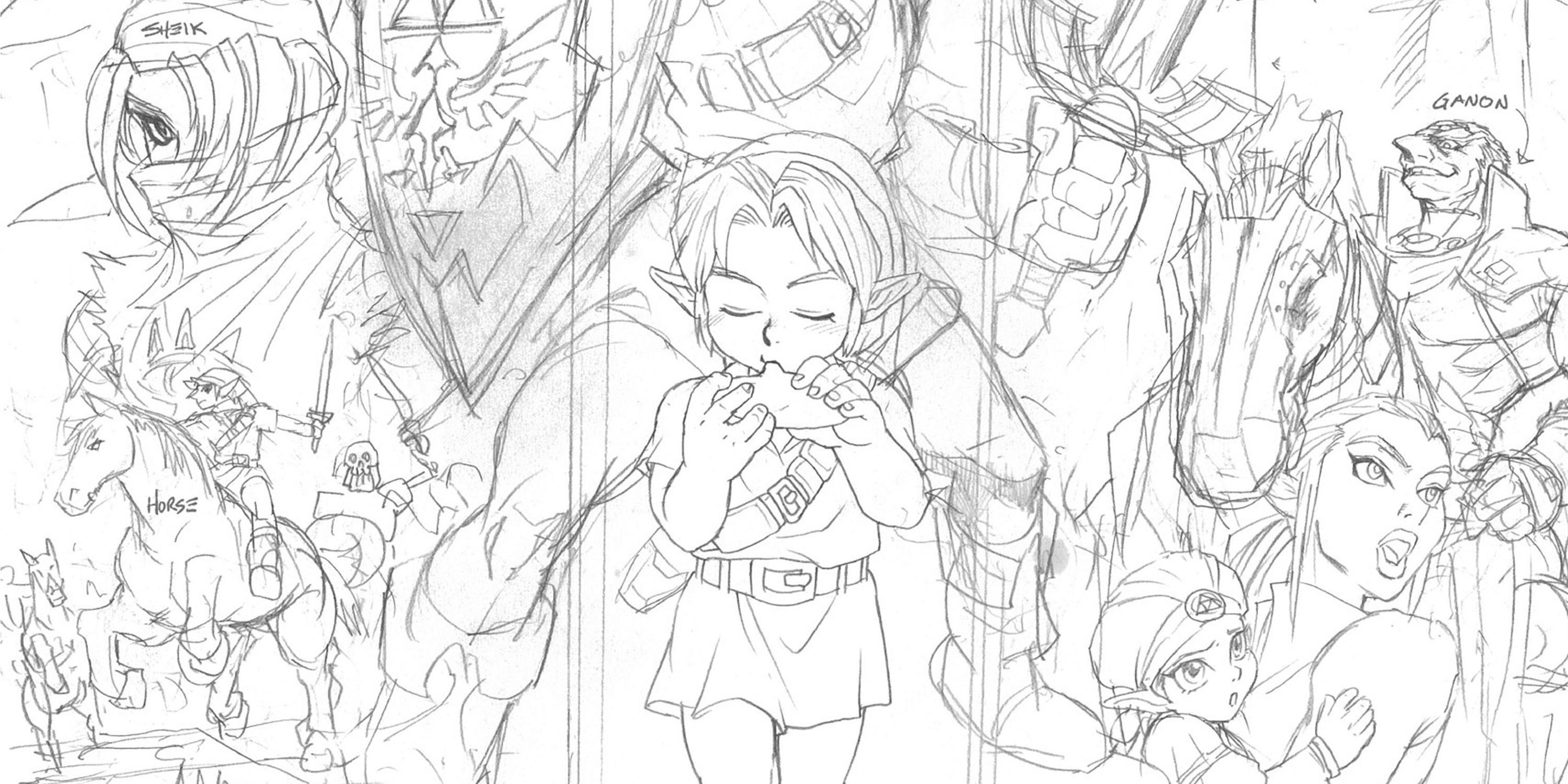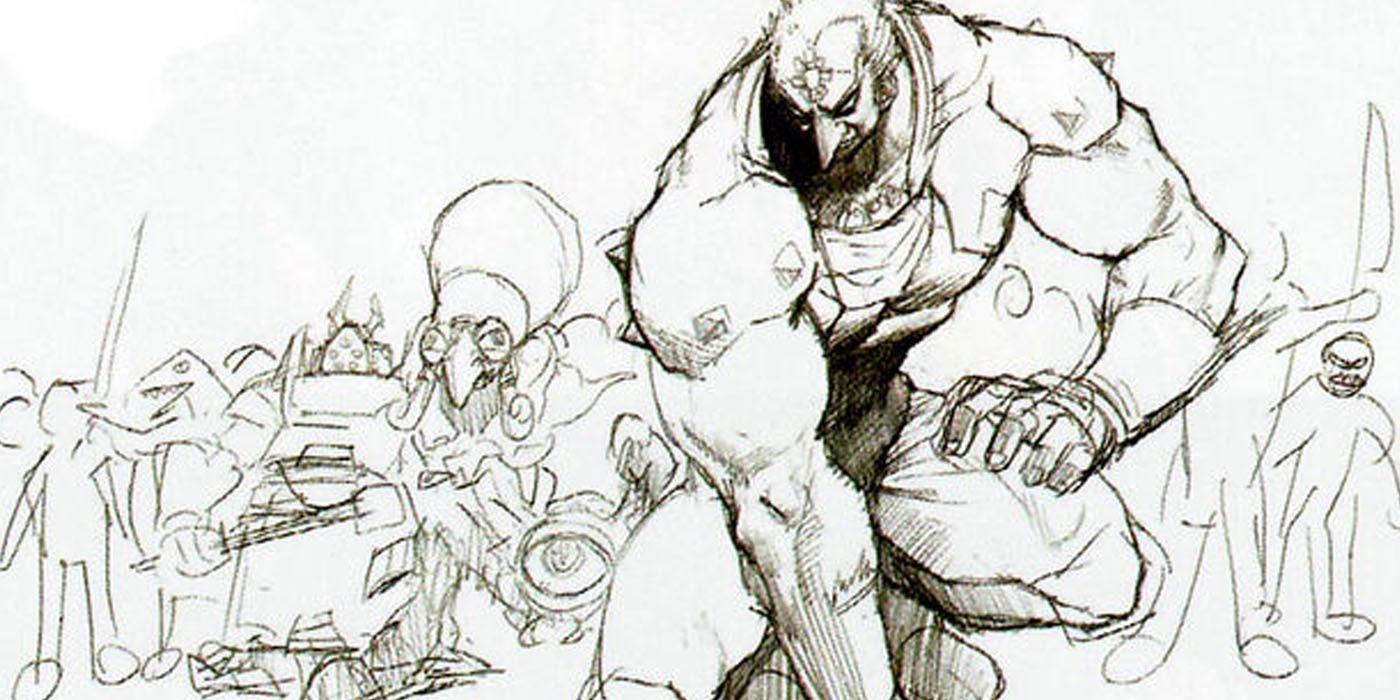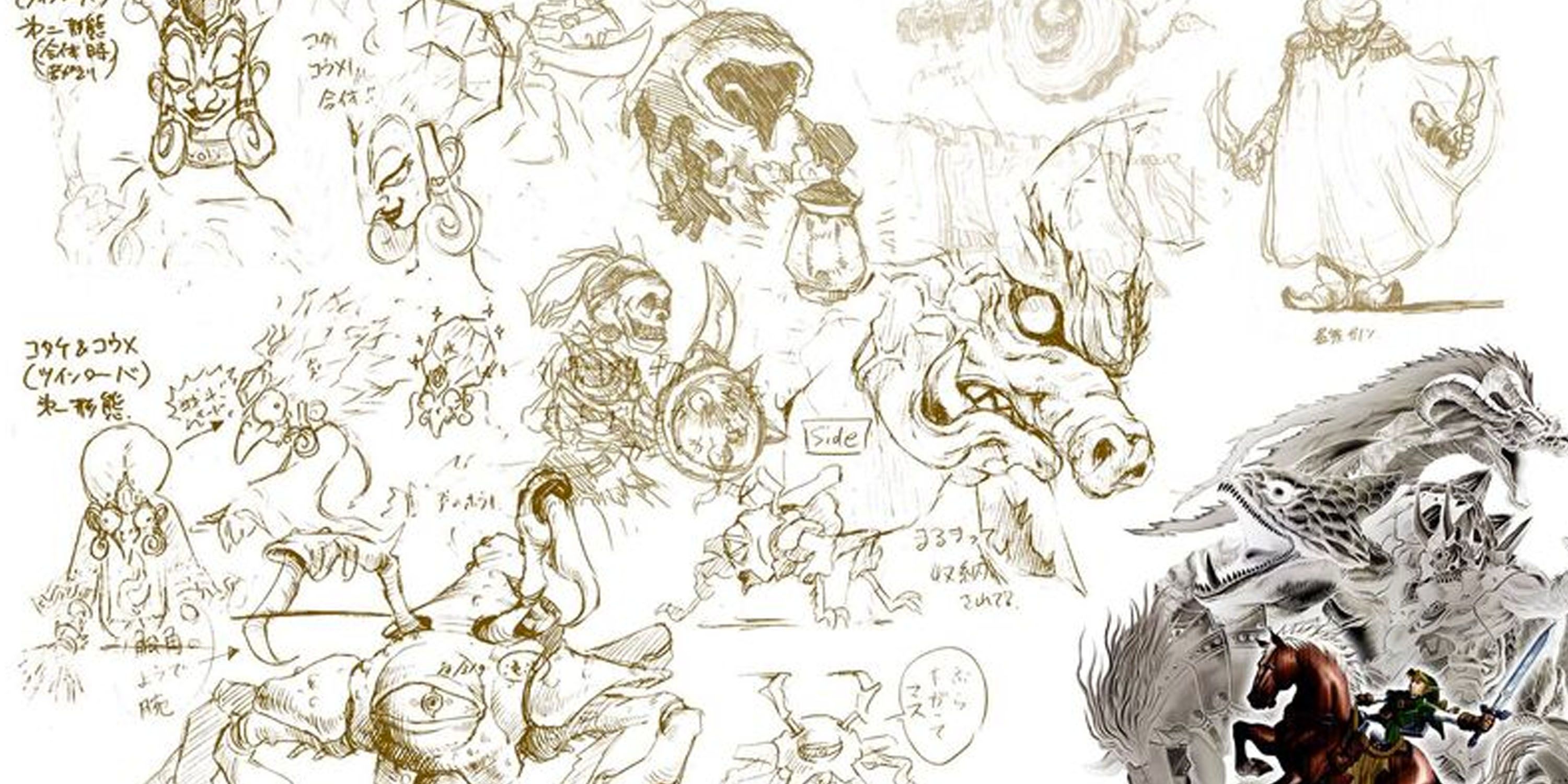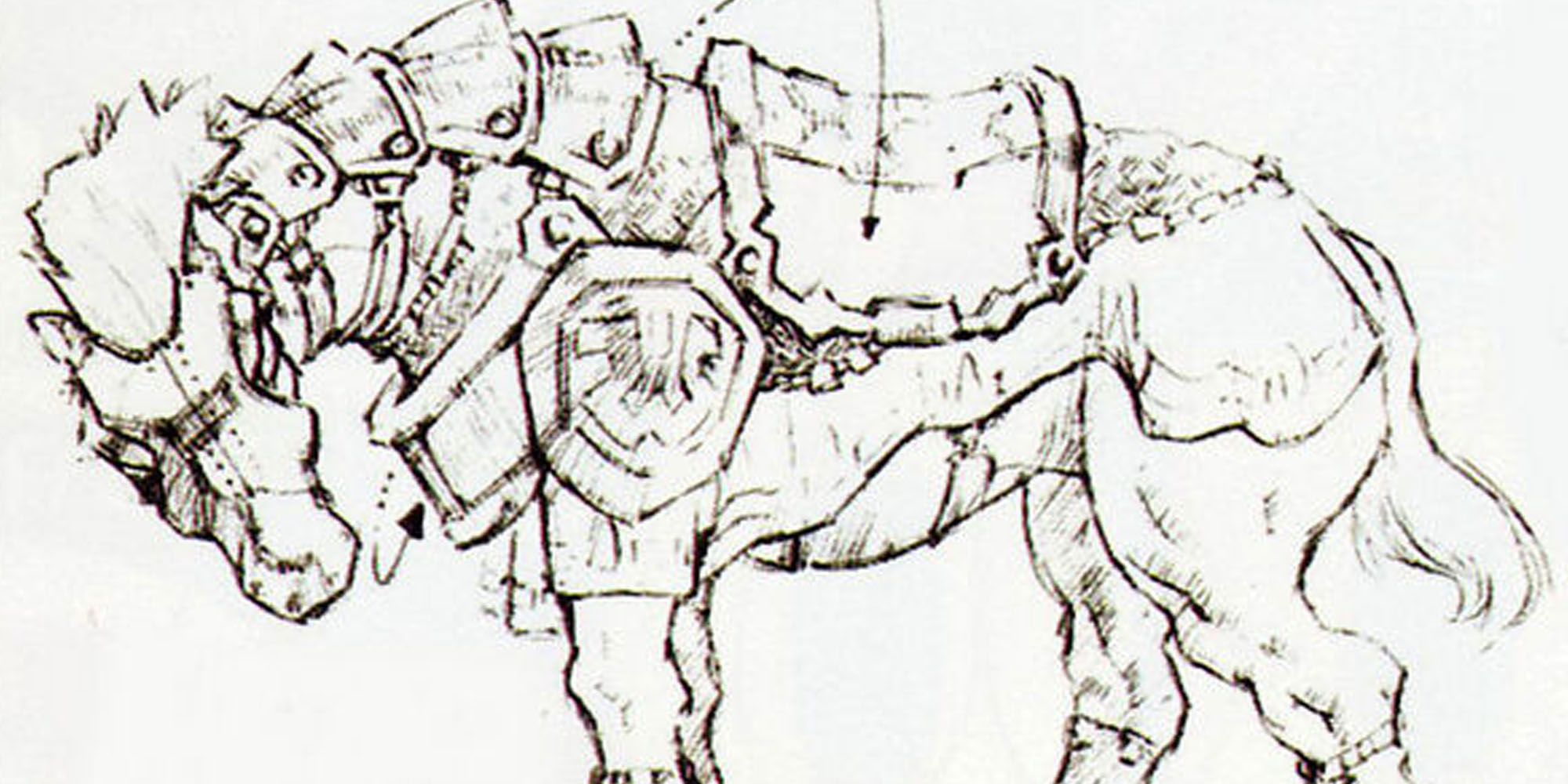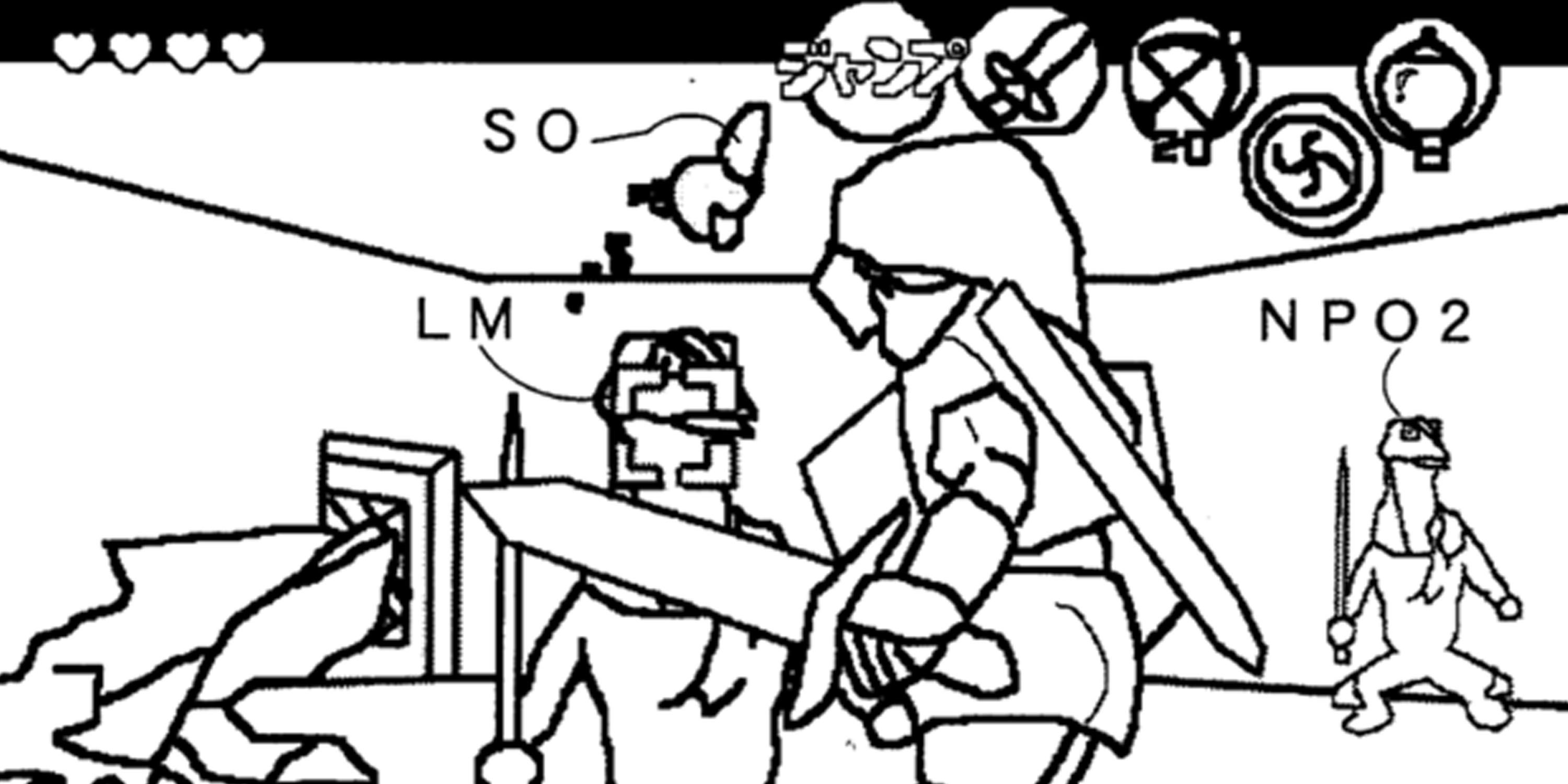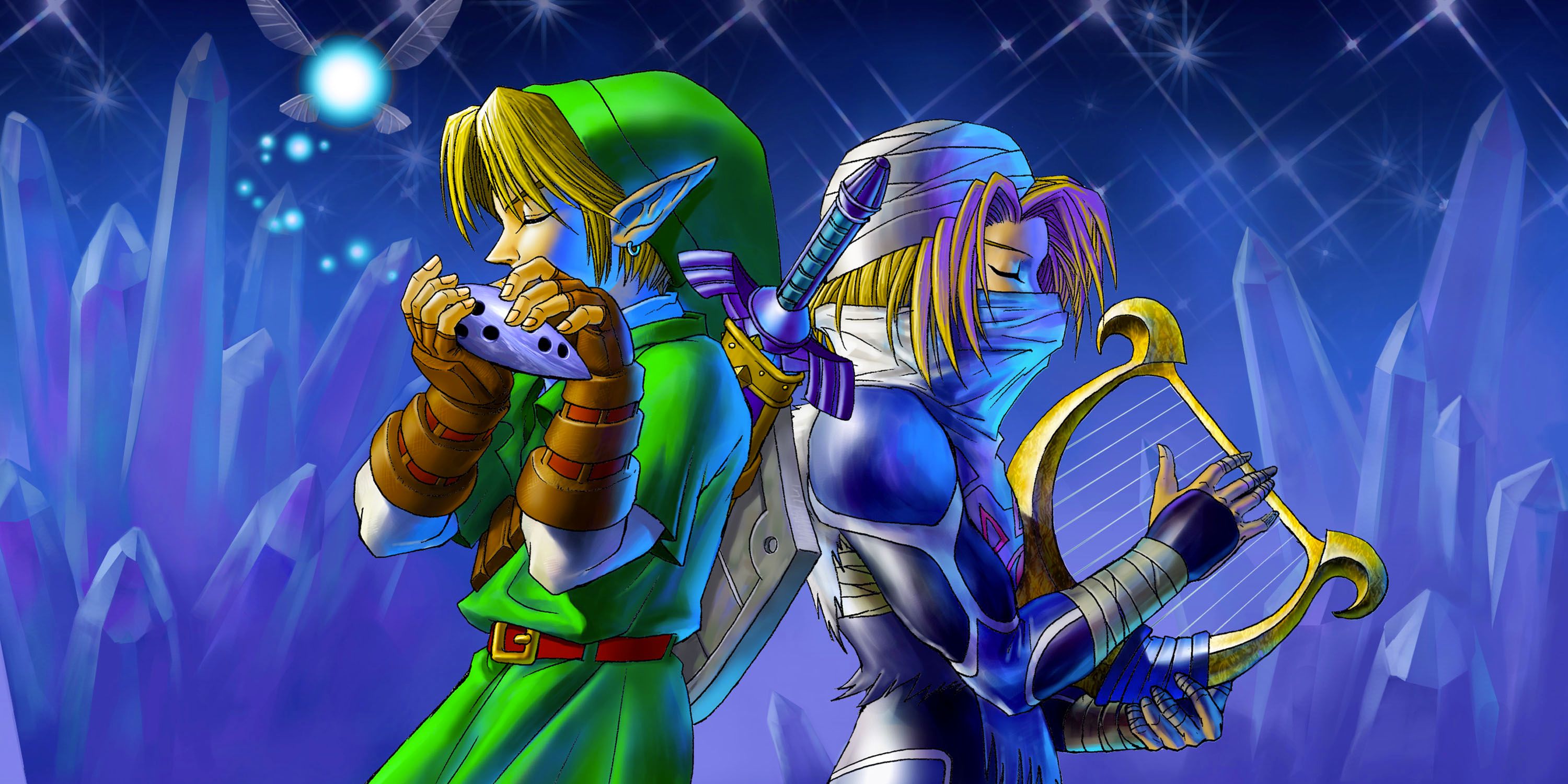Few companies have as many amazing video game franchises as Nintendo. Super Mario Bros. alone would be enough to keep the studio's reputation sterling for years to come, but it's the series that surround Mario that elevate Nintendo. Beyond Super Mario, The Legend of Zelda is arguably the company's most prestigious franchise, with Ocarina of Time frequently acknowledged as one of the greatest video games ever made.
For as influential to the medium as Ocarina of Time is, concept art reveals The Legend of Zelda's first 3D outing was almost a very different game. It only makes sense Ocarina of Time went through so many revisions. Simply beyond being Zelda's first 3D game, OoT was pushing the Nintendo 64 to its limits. While some pieces of Ocarina concept art reflect the game we ultimately got, many offer insight into a radically different experience.
10 The Great Deku Tree
Due to the Nintendo 64's hardware, Ocarina of Time's in-game visuals could only reflect so much of what concept art depicted. Link's encounter with the Great Deku Tree is noticeably grander and far more vibrant in picture form, but it's not unrecognizable to the event in-game. Ocarina of Time's development staff prioritized capturing the atmosphere of the concept art rather than the exact colors and models. Both Link and the Deku Tree have less detailed models in-game, but Kokiri's Forest haze– along with the flickering sprites and beams of light– end up evoking the concept art wonderfully.
9 The Hero Of Time & The Sheikah
Link and Sheik's battle against Ganondorf's many forces was a frequently run piece of promo art leading to Ocarina of Time's release. It's one of the few pieces of arc from the game's developing not only depicting combat, but showing Sheik in a fight. She notably wields a dagger she never gets to use in-game. For that matter, Sheik never actually fights in Ocarina of Time at all. Considering Zelda was fending for herself for seven years, though, it's no stretch Sheik has some combat experience.
8 Link Vs Gohma
Ocarina of Time is not a hard game at the end of the day, but it was also the first 3D game of its kind. The Legend of Zelda couldn't afford to muddy its transition into 3D with a particularly challenging difficulty. This isn't to say Ocarina of Time doesn't pose a challenge, though, and even the easier bosses often have some element of grandeur to them.
Take for instance Gohma, Ocarina of Time's first boss. She's incredibly simple, but she's also imposing and fought in dark room where she has every advantage imaginable. This piece of concept art was notably featured in Ocarina of Times manual, setting any players who read it up to fight the Parasitic Armored Arachnid herself.
7 The Many Faces Of Link
Although Ocarina of Time begins with young Link, Nintendo originally planned for the game to solely star an adult Link. When Shigeru Miyamoto requested that Link be younger, the development team came up with the idea of Link aging over the course of the story. Link's design had been more or less finalized at this point (seen left,) but he also sported two variations taking cues from Zelda II. Considering Shigeru Miyamoto had been working on a remake of The Adventure of Link for the Super Famicom right before working on Ocarina of Time, it's safe to say these designs are leftovers of Zelda 64's original AoL influence.
6 Main Cast Sketch
What's particularly notable about Ocarina of Time's main cast sketch is how finalized everyone's design is– save for Impa. Holding Zelda on the bottom-right, Impa not only looks considerably younger, she has a different hair style. It seems she's also traded her Sheikah armor in favor of more traditional royal garbs (something akin to what she wears in the Oracle games.) Impa's design was ultimately changed, likely to reflect her actual in-game character model. Although Ocarina of Time has quite a bit of concept art, some characters were modeled independent of their concept art.
5 Ganondorf And The Forces Of Evil
Ganon has always been an intimidating villain, but Ocarina of Time was the first time he was given a personality. He's arrogant, cruel, malicious, and respects Link's power as much as he comes to resent it. Ocarina's depiction of Ganondorf is far from a three-dimensional villain, but he's not bland by any means. It helps that his forces pose a direct threat to Link throughout the entire game, with many depicted here. An early Lizalfos can be seen all the way to the left, next to an Iron Knuckle and one half of Twinrova– perhaps suggesting Koume & Kotake's existence was a late-game change.
4 Early Enemy Design
Pictured here are a number of enemies and bosses from Ocarina of Time, along with a few that seem to be inspirations for Majora's Mask. Twinrova's young and old form's can be seen on the top & bottom left respectively– once again only featuring one witch instead of twins. Right above Gohma, however, is a Stalfos that has more in common with the Ikana Knights from MM than any Stalfos from OoT.
The assassin wielding daggers in the top right isn't an enemy that appears in either Ocarina of Time or Majora's Mask, but its overall design seems to be a clear inspiration for the Garo Robes that haunt Ikana Valley.
3 Ganondorf's Steed
Although not a large presence in-game (only appearing in two cutscenes,) Ganondorf's horse gets a detailed piece of concept art– something not even Epona has. This might be because Epona's design was finalized early, but it's still worth noting. This could suggest Ganondorf was once intended to play a larger role in the plot, but it's unlikely he already appears quite frequently compared to other villains in the series, especially up to that point. Worth noting is the shield on the horse's armor, featuring an unfamiliar symbol.
2 Early Z-Targeting
Z-Targeting was a revolutionary concept that fundamentally changed 3D gaming as we know it. Inspired by chanbara style cinema (samurai movies,) Z-Targeting has a very cinematic quality to it. It's slow paced, methodical and leads to a combat system that holds up to this very day. Since Nintendo was afraid the concept of locking on would be too alien for audiences to immediately grasp, Navi was introduced as an avatar who would hover over anything Link locked onto. From there, a story was designed around Link & Navi's relationship, fueling Ocarina of Time's coming of age story.
1 A Legendary Concert
The Legend of Zelda: Ocarina of Time relishes in its narrative. While simply told, Ocarina of Time's script is dense with nuanced character work and a coming of age story that's far sadder than the game's whimsical atmosphere at times might imply. Concept art shows this off wonderfully, but it also highlight a missed opportunity: Sheik.
For as often as Sheik appears in Ocarina of Time's concept art, her role in-game never quite lives up to what's promised. This scene, however, depicts one of the best in Ocarina, where Sheik teaches Link the Serenade of Water inside the Ice Cavern. Sheik may not do too much over the course of the story, but her scenes with Link stand out as OoTs best.

